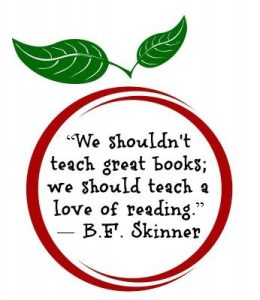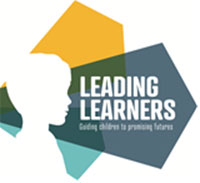Phonics

At Worth Valley Primary School, we believe that teaching children to read is the most important gift we can give them. We value the importance of reading and know that reading is central to our ability to understand, interpret and communicate with one another. To access the wider curriculum, children must be confident readers who can understand, interpret and apply what they read to other areas of learning.
Our aims are for pupils to:
- Build on their growing knowledge of the alphabetic code, mastering phonics to read and spell as they move through school.
- Be equipped to tackle any unfamiliar words as they read.
- Read confidently for meaning and regularly enjoy reading for pleasure.
- See themselves as readers for both pleasure and purpose.
- Be taught with fidelity to the Little Wandle Letters and Sounds Revised programme
We teach a synthetic phonics programme. We start teaching phonics in pre-school and Nursery using the Little Wandle Foundations for Phonics teaching. In Reception we follow the Little Wandle Letters and Sounds Revised progression.
We model the application of the alphabetic code through phonics in shared reading and writing, both inside and outside of the phonics lesson and across the curriculum.
We have a strong focus on language development for our children because we know that speaking and listening are crucial skills for reading and writing in all subjects.
Foundations for phonics in Pre-School and Nursery
We provide a balance of child-led and adult-led experiences for all children that meet the curriculum expectations for ‘Communication and language’ and ‘Literacy’. These include:
- sharing high-quality stories and poems
- learning a range of nursery rhymes and action rhymes
- activities that develop focused listening and attention, including oral blending
- attention to high-quality language.
We ensure Nursery children are well prepared to begin learning grapheme-phoneme correspondences (GPCs) and blending in Reception.
Daily phonics lessons in Reception and Year 1
We teach phonics for 30 minutes a day. In Reception, we build from 10-minute lessons, with additional daily oral blending games, to the full-length lesson as quickly as possible. Each Friday, we review the week’s teaching to help children become fluent readers.
Children make a strong start in Reception: teaching begins in Week 2 of the Autumn term. We follow the Little Wandle Letters and Sounds Revised expectations of progress:
- Children in Reception are taught to read and spell words using Phase 2 and 3 GPCs, and words with adjacent consonants (Phase 4) with fluency and accuracy.
- Children in Year 1 review Phase 3 and 4 and are taught to read and spell words using Phase 5 GPCs with fluency and accuracy.
Daily keep-up lessons ensure every child learns to read
Any child who needs additional practice has daily Keep-up support, taught by a fully trained adult. Keep-up lessons match the structure of class teaching, and use the same procedures, resources and mantras, but in smaller steps with more repetition, so that every child secures their learning.
We timetable daily phonics lessons for any child in Year 2 or 3 who is not fully fluent at reading or has not passed the Phonics screening check. These children urgently need to catch up, so the gap between themselves and their peers does not widen. We use the Little Wandle Letters and Sounds Revised assessments to identify the gaps in their phonic knowledge and teach to these using the Keep-up resources – at pace.
Rapid Catch Up for Key Stage Two
If any child in Year 3 to 6 has gaps in their phonic knowledge when reading or writing, we plan phonics ‘catch-up’ lessons to address specific reading/writing gaps. These short, sharp lessons last 20 minutes and take place at least three times a week. The children also apply their phonics skills in reading practise sessions which last 10 minutes at least three times a week. Rapid Catch up mirrors the main phonics programme but has been created to help children catch up quickly, so has a faster pace.
Teaching reading
We teach children to read through reading practice sessions three times a week. These:
- are taught by a fully trained adult to small groups of approximately six children
- use books matched to the children’s secure phonic knowledge using the Little Wandle Letters and Sounds Revised assessments and book matching grids on pages 11–20 of ‘Application of phonics to reading’
- Children are monitored by the class teacher, who rotates and works with each group on a regular basis.
Each reading practice session has a clear focus, so that the demands of the session do not overload the children’s working memory. The reading practice sessions have been designed to focus on three key reading skills:
- decoding
- prosody: teaching children to read with understanding and expression
- comprehension: teaching children to understand the text.
In Reception these sessions start in Week 4. Children who are not yet decoding have daily additional blending practice in small groups, so that they quickly learn to blend and can begin to read books. This is continued in Year One.
In Year Two and Three, we continue to teach reading in this way for any children who still need to practise reading with decodable books.
Home reading
The decodable reading practice book is taken home to ensure success is shared with the family. Reading for pleasure books also go home for parents to share and read to children.
Assessment
Children’s progress in phonics is continually reviewed through assessment. This is used to monitor progress and to identify any child needing additional support as soon as they need it.
Assessment for learning is used:
- daily within class to identify children needing Keep-up support
- weekly in the Review lesson to assess gaps, address these immediately and secure fluency of GPCs, words and spellings.
Summative assessment is used:
- every six weeks to assess progress, to identify gaps in learning that need to be addressed, to identify any children needing additional support and to plan the Keep-up support that they need.
- By SLT and scrutinised through the Little Wandle Letters and Sounds Revised assessment tracker, to narrow attainment gaps between different groups of children and so that any additional support for teachers can be put into place.
- The Little Wandle Letters and Sounds Revised placement assessment is used with any child new to the school to quickly identify any gaps in their phonic knowledge and plan provide appropriate extra teaching.
Statutory assessment
Children in Year 1 sit the Phonics screening check. Any child not passing the check re-sits it in Year 2.
Ongoing assessment for catch-up
Children in Year 2 to 6 are assessed through:
- their teacher’s ongoing formative assessment
- the Little Wandle Letters and Sounds placement assessment the appropriate half-termly assessments.
- Rapid Catch up assessments.
At Worth Valley Primary School, safeguarding is of paramount importance. We are committed to ensuring the welfare and safety of all our children and staff in school.



